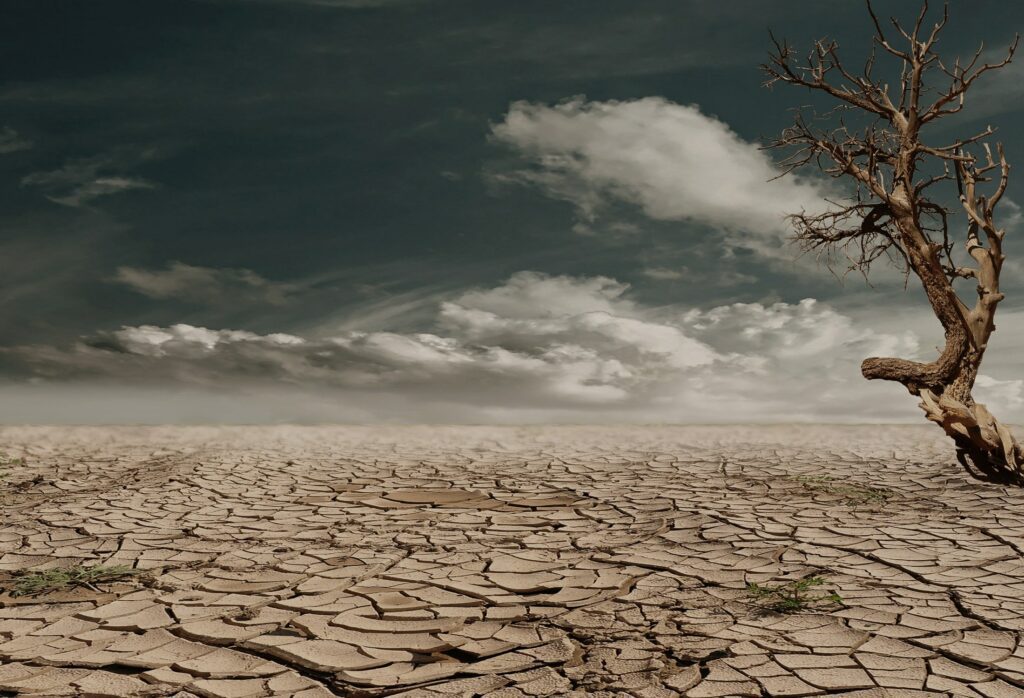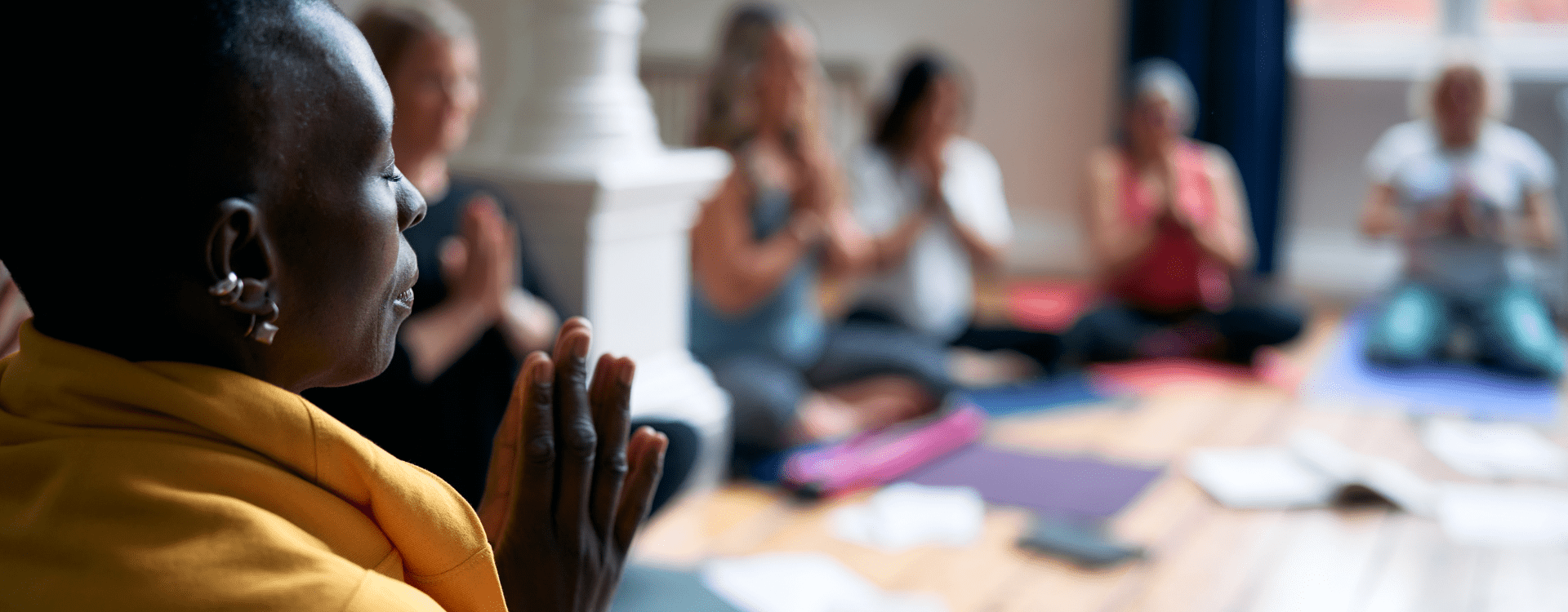
We need to talk about yoga and climate change
You’re about to hear a lot more about climate change policy as the UK plays host to the most important climate UN negotiations since the 2015 Paris Agreement this November.
At current rates, according to one project tracking carbon emissions, the world has roughly seven years before it has exhausted its budget of carbon to keep temperature increases below 1.5°C.
Currently, at the time of writing, hundreds of people are thought to have died from record-breaking heatwaves, we are witnessing wildfires in the Arctic, drought, extreme weather conditions and species extinctions. The global economy could lose 10% of its total economic value by 2050 due to climate change.
As a yoga practitioner, a question has long nagged me. Is it enough to tune out in feel-good bubbles? The practice of yoga and many mindfulness practices involves introspection and a general acceptance of things as they are, yet solving environmental crises requires radical action. By changing our mindset, and to use a phrase coined by trauma specialist Thomas Hübl, can our practice in fact help us to become unfrozen to build resources that help us to cope and eventually act?
Our dharma
In yoga, we speak of our dharma – the path to be followed by each individual in ways that are harmonious with the whole. Fulfilling one’s dharma is more than simply one’s purpose – it is considered the very means by which one transcends the cycle of birth and death, or what is known as saṃsāra. Another important term is karma, which means action. For every action there is also a reaction, and the cycle of cause and effect spans endless lifetimes. Acting in accordance with dharma provides a release from this karmic spiral – or in other words, by helping each other we might transcend misfortune.
The Karma Yoga that Krishna emphasises in the opening chapters of the Bhagavad Gita is based on the idea that dharma or duty should be performed without desire for personal gain. If our dharma is to care, we must first know and understand what is happening – and its deadly karmic consequences. Acting blindly – or ignoring how our lives affect the planet we depend on –must surely undermine our dharmic duty, limiting our chances of freedom from cycles of karma.
The Gita refines the doctrine of karma still further by insisting that it is the consciousness of the performer rather than the action itself that is the crucial factor. Action, good or bad, produces future results and rebirth in another body, and so one might think that moksha, release from rebirth, can be gained only by renouncing all action. The Bhagavad Gita teaches, however, that it is not the action itself that must be renounced but the selfish desire that prompts it.
Truth and non-harming
Mohandas Gandhi built his political philosophy out of the first two ethical precepts of Patañjali’s yoga – ahiṃsā (often translated as non-violence) and satya (truthfulness). Many other texts about dharma have named these ideas as essential foundations. If we claim to love all beings – to feel compassion for every soul – can we really say with hand on heart that enjoying our pleasures at a cost to others is ‘right action’? We need to consider how our consumption, our travel, our food and leisure choices all have an impact on fellow humans, domestic animals and wildlife, and the natural world itself.
It might not be easy to decipher the best course of action, but could it nonetheless be helpful to reflect on the importance of minimising harm? Perhaps we could ask ourselves simply: ‘What do I want to do in the world? Do I want to retrain in some way that can contribute more? How do I change my diet? Should I change my car?’
We can also engage with the powerful structures that shape broader action; that means raising our voices, pushing corporations to go further and faster, and pressuring governments at all levels. That some people are voluntarily reducing their own emissions is a clear sign of our willingness to change – by flying less, eating less meat and dairy (the biggest source of emissions from food) and using clean energy. Another yoga truism – ‘Where we focus attention – it goes.’
What we do and how we do it is materially important. It’s very scary to acknowledge the reality that millions – perhaps even billions – of us could die from the effects of extreme heat in the decades ahead. Our chances are largely determined by where we live and the local consequences of today’s economic disparities. And yet, we still have some agency.
A mindful pause, not disconnection
We mustn’t turn away from our current situation despite feeling overwhelmed, disempowered or numb. Yes, we practise yoga to feel better. To feel more in our bodies, healthier, calmer, and fitter. Perhaps to self-regulate. We actively control our breath to control our minds in search of focus and clarity. Yet what are we breathing? Air pollution levels remain dangerously high in many parts of the world. Data from WHO shows that nine out of ten people breathe air containing high levels of pollutants. WHO also estimates that a staggering seven million people die every year from exposure to polluted air.
We cannot hope to fumble our way through the next few decades without first pausing to look at the options and honestly accepting how much has to change in the coming ten years. Satya and science can be married. Science tells us that we can see the planet and our impact on it in more detail than ever before. Satya says we must look without flinching at the fact that we are permanently changing and wreaking the Earth and its ecosystems.
The biggest global challenges we face today– the climate crisis, global pandemics, collective trauma can only be tackled through acting in concert, rather than alone. At the same time, if we act from a knee-jerk place of overwhelm or reactivity, we become incapable of relating and moving conversations and action forward. The planet’s trajectory has somewhat been set. It would be naïve to pretend otherwise. However – our actions and thoughts day-to-day will still influence the lives of billions of people and creatures. Arjuna in the Bhagavad Gita was initially overwhelmed by a deep sense of compassion – kripa – reflecting a person’s concern for others who are in distress. Let’s not shy away from meeting the climate challenge head on.
About the author
Joanna Benn teaches yoga and campaigns on international environmental issues. She has lived and worked in seven countries including the UK, US, Switzerland, Italy, Kenya, Chile and Belgium and her work can be found within environment websites and print outlets including the BBC, NatGeo Asia, Biz Green, WWF and The Environmentalist. Jo began her career at Associated Press TV News in London as a TV producer. Her love of yoga has followed her around the world. In 2019 she graduated with Distinction from Yoga Campus, London and has since been teaching alongside her day job. Her goal is to bring coherence to our inner and outer worlds to enable us to act with presence and responsibility. www.everybodyyogauk.com
This article was first published in the Autumn 2021 edition of Spectrum.
About BWY
The British Wheel of Yoga (BWY) is committed to sharing yoga’s transformative power and rich heritage through events and education. Guided by yoga’s principles and traditions, BWY’s mission is to enrich lives through yoga, increasing accessibility and inclusivity. Established as a registered charity in 1965 and recognised as the National Governing Body for Yoga by Sport England and Sport Wales, BWY serves more than 5000 members and is supported by a 100-strong local volunteer network and a small central team.
For all media inquiries:
Natalie Lyndon, BWY PR & Communications Officer




